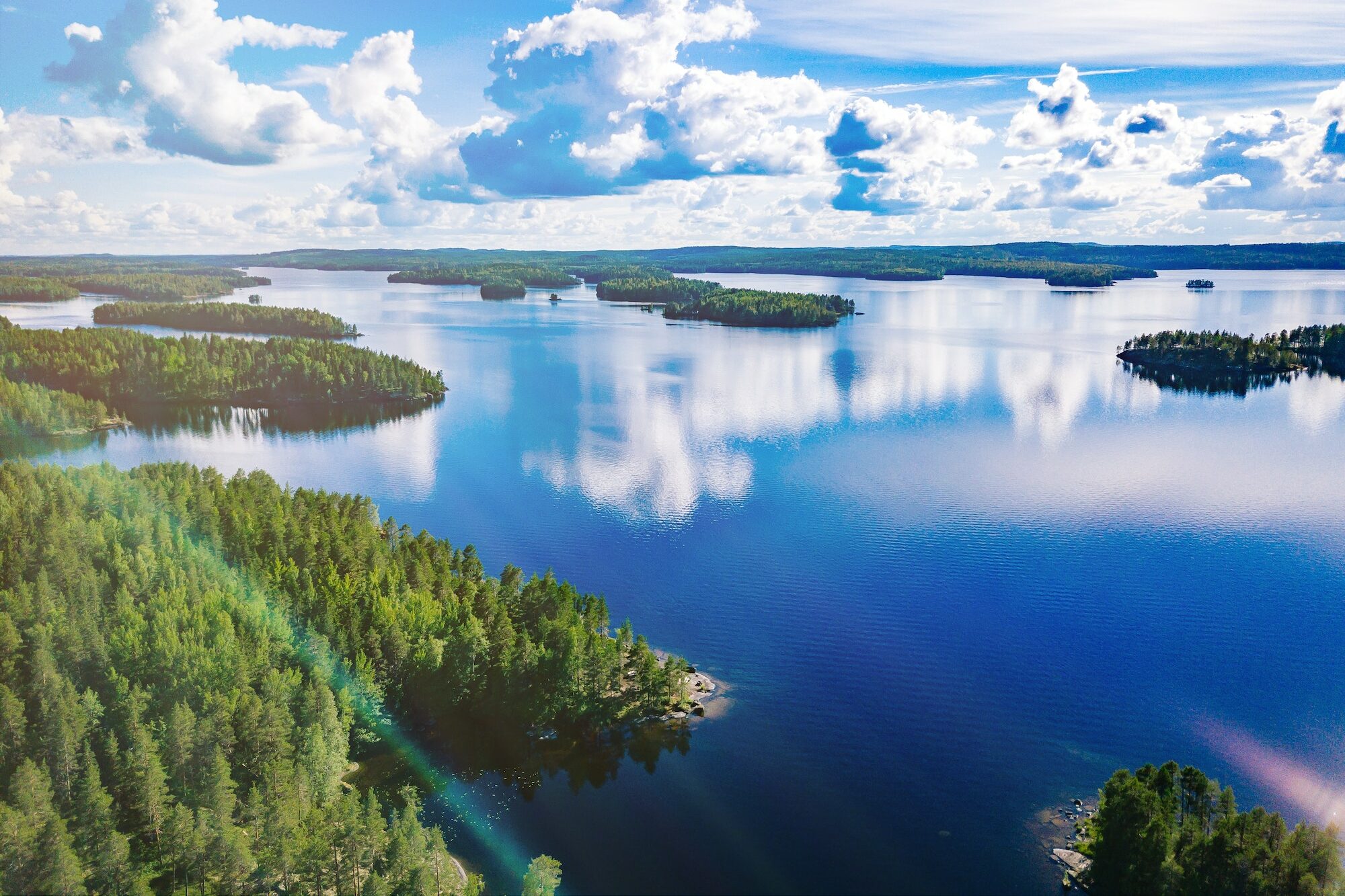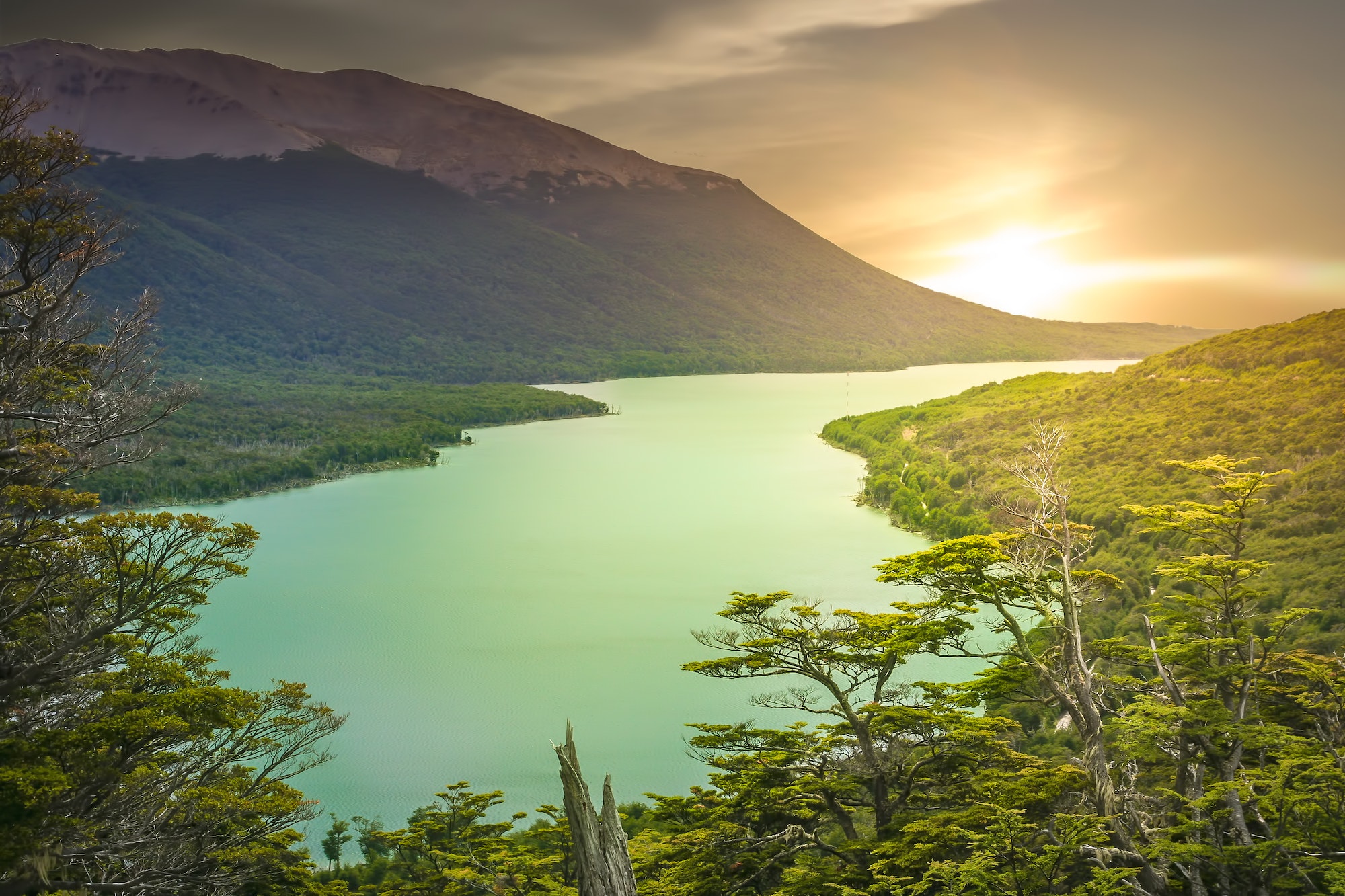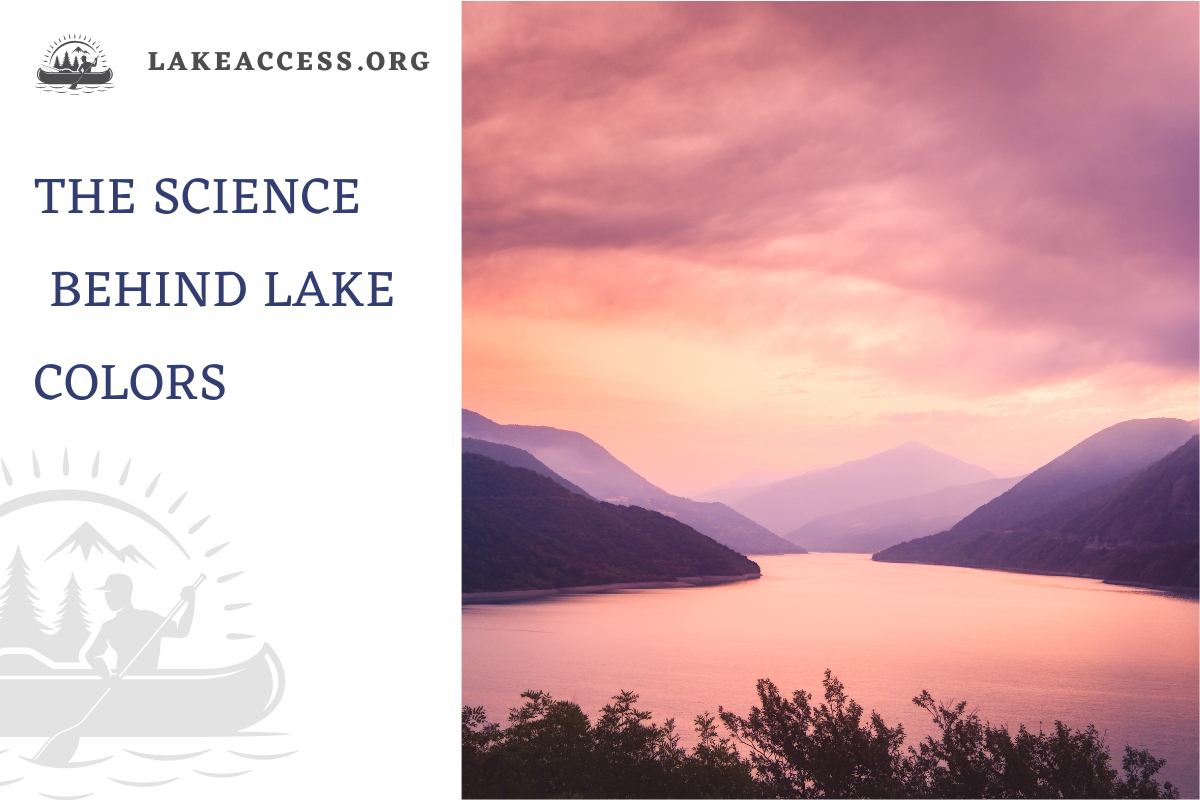We’ve all seen it: a beautiful, serene lake set against a backdrop of mountains, trees, or grassy fields. The water is so still and clear that you can see the bottom, and the color is an intense blue. But have you ever wondered why lakes could be different colors? It turns out there’s a science behind it!
Lakes can be different colors for a variety of reasons. The most common color is blue, but lakes can also be green, brown, or even pink! A few factors, including the presence of algae, minerals in the water, and the water’s depth, determine the lake’s color.
The different types of lake colors
Blue
The blue color of lakes is often due to cyanobacteria, a type of bacteria that contains a pigment called phycocyanin. This pigment absorbs blue light and reflects back the blue color, which is why lakes appear blue when viewed from above. Cyanobacteria are often found in high concentrations in lakes with many nutrients, such as phosphate and nitrogen.

Green
Green lakes are bodies of water typically surrounded by vegetation and have a greenish color due to the presence of algae. The algae cause the color of a green lake in it. Algae is a type of microorganism that uses photosynthesis to convert sunlight into energy, producing oxygen and nutrients for other organisms in the ecosystem. The presence of algae will cause water to take on a greenish hue, as seen in many lakes worldwide.

Brown
The color of a brown lake is defined as the color that appears when water becomes contaminated by organic matter, such as dead plants and algae.
When organic matter decays in water, it releases tannins that give the water a brownish-yellowish tint. This can occur naturally or due to human activity such as deforestation, agriculture, and industrial waste. The color of a brown lake is also affected by other factors, such as its depth, clarity, and surrounding landscape.

Pink
The pink lake color results from algae, such as Dunaliella salina, producing carotenoids. This type of algae can be found in many lakes worldwide and is known for transforming water into a red or rose-colored hue.
Some examples of pink lakes include Lake Retba in Senegal, which gets its color from the Dunaliella salina algae; Mono Lake in California, which has been turned pink due to increased levels of salt production; and Chilko Lake in British Columbia, Canada, where increased evaporation has resulted in a red hue.

What causes lake color variation?
Rock and Sediment Particles
The presence of minerals in the water causes Lake color variation due to rock and sediment particles. These minerals reflect light at different wavelengths, which leads to different colors.
The color of a lake can range from shades of blue-green to brownish-red depending on the type and amount of minerals in the water. Rocks such as limestone, which contain calcium carbonate, can add a white tint to the water, while iron oxide can lead to a rusty red shade. Sediment particles such as clay can also contribute to lake color variation due to their ability to absorb light rays differently than other particles found in lakes.
Water Chemistry
Water chemistry factors can affect lake color. For example, dissolved and particulate material can give water a green, light brown, dark brown, or red color. Dissolved organic compounds called tannins can result in dark brown colors, while algae floating in the water (particles) can impart a green color.
Color variations can be measured concerning standard color scales such as the Forel-Ule scale and the Platinum-Cobalt scale. Knowing the water impurity indication color spectrum makes it easier to quickly identify and solve cosmetic, bacteriological, and chemical problems.
Microorganisms
Microorganisms are tiny organisms that live in water. They come in various forms, from single-celled bacteria to complex algae. Microorganisms can cause lake color variation by changing the chemical composition of the water through photosynthesis or respiration. Photosynthesis involves using sunlight to convert carbon dioxide into sugar, while respiration involves the breakdown of sugar into carbon dioxide and energy for use by the organism.
When microorganisms photosynthesize, they produce oxygen which causes lake color to become clearer as it promotes plant life growing around the lake’s shores. Conversely, when microorganisms respire, they produce carbon dioxide, leading to increased algae growth in lakes resulting in murky waters with a greenish coloration.
UV Light
UV light can cause a photochemical reaction between two molecules of ethylene or two molecules of thymine. This results in the formation of a 4-membered cyclobutane ring.
The presence of UV light in the environment can cause this reaction to occur, resulting in the production of pink lakes. The halophilic bacteria in these lakes have evolved to use this chemical reaction to protect against sunlight by producing colorful pigments that absorb UV radiation and protect their cells from damage.
Light Scattering
Light scattering occurs when light waves encounter particles or molecules in the water, such as water molecules, atmospheric particles, and algae.
This causes the blue waves to be either reflected or passed through and then scattered by other molecules and particles in the water. This changes color from blue to red due to water molecules’ absorption of red light at a nuclear level.
Minerals
Minerals can cause lake color variation due to their chemical composition and interaction with sunlight. For example, iron oxide is a common mineral that causes lakes to appear red or brown due to its ability to absorb light in the blue and green wavelengths. Other minerals such as manganese, copper, and cobalt can also contribute to lake color variations depending on their concentrations in the water. Additionally, certain types of algae can produce pigments that change the appearance of the lakes they live in.
Water Temperature
Water temperature affects lake color because it affects the number of dissolved particles in the water. As the temperature increases, more particles are dissolved into the water, which changes its color. For example, colder temperatures cause less particle dissolution, resulting in clearer, bluer waters. Conversely, warmer temperatures lead to increased dissolution of particles which can result in a variety of colors ranging from green to brownish-red depending on the type of particles present in the water.
Landscape Around the Lake
The landscape around a lake can be affected by various factors, such as glacial activity, mineral deposits in the water or bedrock surrounding the lake, and sunlight exposure. These factors can cause variation in the lake’s color due to changes in its pH levels or exposure to different types of light.
The color variation of lakes can also be affected by the type and amount of minerals in their surrounding bedrock or water sources. For example, Jiuzhaigou Valley’s “Haizi” lakes are known for their blue, green, and turquoise hues caused by glacial activity depositing different minerals into the waters over time. Additionally, clear waters require more sunlight exposure than murky waters, which also affects how they appear color-wise.
FAQs
What causes the color of lakes?
Various factors, such as the amount and type of algae in the water, nutrient loadings from human activities or agricultural runoff, and light conditions, can cause the color of lakes.
The presence of algae can cause lakes to become green in color, while high nutrient loads can lead to bluewater lakes. Brown water lakes are typically found in areas with high levels of dissolved organic matter deposited by surrounding forests or wetlands. The clarity and color of each lake also depend on its light conditions which can change over time due to changes in the landscape around the lake or changes caused by human activities such as deforestation or agricultural runoff.
What is the difference between blue and green lakes?
Blue and green lakes contain water molecules that absorb different wavelengths of light. In blue lakes, water molecules absorb longer wavelengths (e.g., red light) while shorter wavelengths (e.g., blue light) pass deeper into the water column. In green lakes, chlorophyll-containing algae can give the water a green color due to high concentrations of this pigment in the algae cells.
Blue lakes typically have high clarity and low levels of nutrients or algae. In contrast, green lakes often have high nutrient loads, and abundant algae bloom that can decrease oxygen levels in hot summer months, leading to fish kills if they drop too low for fish survival. Green waters are also more likely to be eutrophic due to agricultural fertilizers or other human activities around the lake than blue waters, which tend to be more pristine with little human impact on their surrounding watersheds.
What causes a lake to appear pink?
The appearance of a lake as pink can be caused by the presence of algae, such as Dunaliella salina. These algae produce carotenoids which give the water its distinctive red or rose color.
When these algae are present in high enough concentrations, they can cause the lake to appear pink. This effect is often enhanced by decreased evaporation and salt production, which further alters the natural water stream.

